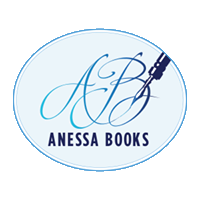 I love writing backstory short stories of a transformative event in my main characters’ lives. I mentioned a few weeks ago that I write short stories to put into my newsletters and my readers love reading them. These are the sorts of stories that I write.
I love writing backstory short stories of a transformative event in my main characters’ lives. I mentioned a few weeks ago that I write short stories to put into my newsletters and my readers love reading them. These are the sorts of stories that I write.
These stories give my readers insight into the characters they’re reading about or will read in my books. If they haven’t read the book the short story references (frequently, I’ll publish the stories of the protagonists of the book I’m working on at the time I send out the newsletter) it entices readers to buy the book (when it comes out) because they are familiar with the characters.
The key to writing these stories is to make truly about just one event.
As we create our characters, we know that we have to give them a wound or a transformative moment in their life. This is the moment that has determined either who the character is at the time of your story or how they see the world (or both). It is a life-changing moment.
Moments like these can be (and have been, so far, in my stories) a birth, a death, meeting someone, or saying goodbye. The only thing is that it has to substantively alter the character’s life. It could be what propels them into the book I’ve written about them—a prologue that simply didn’t fit with the book itself—or something that happen at an earlier point in the character’s life.
The most important thing is that it’s just a snapshot. It is one event. If it were more than that, it would both be too long and lose that special something that all good short stories end with that makes the reader want the story to go on. It is that which truly makes a short story fun.
As with all good stories, there needs to be a clear story structure: an inciting event, a major turning point which really shoves the protagonist into the story, a climax or crisis, followed by falling action. In a tragedy, the story ends at the black moment, that point in time when all is lost. With a short story, what I sometimes do is end just before that moment. All is on the way down, something bad is going to happen, but there’s still hope that maybe it won’t or possibly it won’t be as bad as one might expect. That’s where a lot of my stories end because I want to leave my readers thinking, expecting more… and they’ll get it when they read the book featuring that protagonist (yeah… I’m mean).
Character development in a short story, obviously needs to be brief. You need to give a good sense of character in one line, perhaps two, and then show the rest through their actions and dialogue.
The same is true of description of place—include a sense (other than sight) to give an evocative feeling for a place. A few words to describe the setting is all that’s necessary. We’re going for brevity here, not eloquence.
Yes, you could include so many different enticements in your newsletter—giveaways, deleted scenes, character interviews, etc.—but I find it the most fun to give away a short story every month. And perhaps after reading a character’s story, a reader might want to go out and buy the book!
